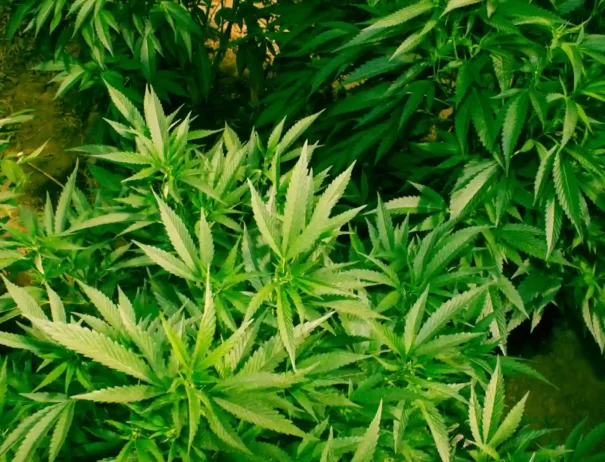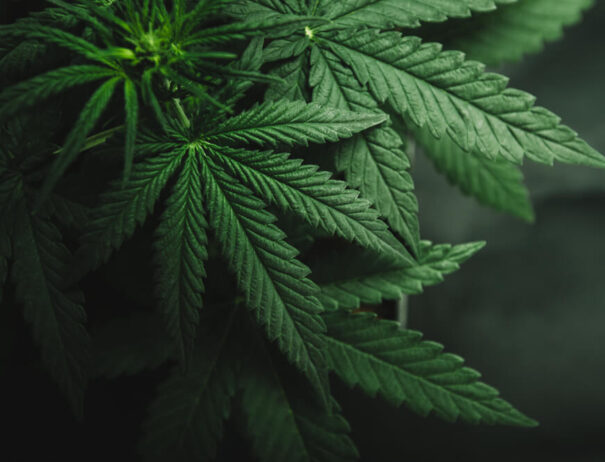Study Finds Medical Weed May Be the Cure to the Opioid Crisis
As more patients in North America secure easy access to medical cannabis, opioid-use rates are starting to decrease at a noticeable rate. Although the drop in opiate use indicates a significant reduction in harm, many outcomes, in terms of cannabis as a substitute, remain unexplored, according to a report by Medscape Medical News
A recent study by Emerald Coast Research in Tallahassee, Florida presented changes in opioid pain medication use in Florida medical cannabis patients.
“Some patients wish to move away from opioid-based pain medications and may choose medical cannabis to control chronic pain,” said Director of Research Carolyn Pritchett, Ph.D “Our data indicates that using medical cannabis to moderate pain may be helpful and effective for certain patients, especially those struggling with health functioning outcomes and quality of life with opioid use,”
The study, which was published in Taylor & Francis Online on September 27th, had 2,183 self-reported medical cannabis users fill out a 66-item cross-sectional survey. Patients were asked questions concerning their health functioning before and after cannabis use, demographic, overall health, and medications.
“Our study is one of the first to address the medical cannabis patient experience by measuring general health functioning in daily life, along with quality of life and use of both medical cannabis and opioid-based pain medications,” said Dr. Pritchett.
Over the last 20 years, illicit and prescription opioid use in the United States increased steadily. As a result, the number of deaths from opioid overdoses quadrupled between 1999 and 2019, reaching nearly 500,000. Most recently, the need to reduce harm associated with opioid use remains high due to significant changes in opioid-involved death rates between 2018 and 2019:
- Opioid-involved death rates increased by over 6%.
- Prescription opioid-involved death rates decreased by nearly 7%.
- Synthetic opioid-involved death rates (excluding methadone) increased by over 15%2
With medical cannabis becoming more widely available in Florida, patients showed significant interest in finding a safer alternative to opioid painkillers. Although many patients cite pain management and quality of life as primary reasons for using medical cannabis, studies concerning the effects of the switch remain limited.
The purpose of this study was to identify the characteristics, ailments, and medical cannabis usage of Florida medical cannabis patients and how they correlate to the perceptions of opioid use and health functioning among patients who gained access to legalized cannabis. The study had three specific aims:
- To characterize patient use patterns and demographics with physician-approved medical cannabis access.
- To provide information on the patients’ individual perceptions on changes in their health functioning after introducing medical cannabis.
- To examine patients’ perceptions of the effect medical cannabis has on their use of Opioid pain killers.
At the time when the data was collected, Florida reported slightly higher rates of opioid perceptions per 100 people than other states.
Of the 2,183 medical cannabis users who participated in the study, most were between the ages of 20 and 70 years old, 87% were white, 54% were women, 47% were unemployed, and another 47% had an annual household income between $25,000 and $75,000.
Most participants reported having between one and five ailments for which they use medical cannabis. 44% of participants reported between 3-5 ailments, 33% reported 6 or more ailments, and 44% reported 3-5 ailments. These ailments were put into groups by type. The largest type of ailment selected was pain and mental health combined, while 9% of participants indicated issues solely with pain, and 28% indicated solely mental health issues.
The amount of cannabis patients used varied significantly among participants in the study. 55% of participants use medical cannabis regularly throughout the day. About 25% use cannabis occasionally throughout the day. 9% used cannabis 1-2 times each day, and about 8% used cannabis during evenings only.
Patients answered questions concerning health functioning and limitations due to health before and after medical cannabis. The highest percentage of responses were that the patient’s health either improved or remained the same. However, for no questions did the largest percentage of participants indicate worsened health after cannabis use.
The most notable improvements recorded after medical cannabis use concern Physical Functioning, Bodily Pain, and Social Functioning. Very few changes in terms of Role-Physical or -Emotional Limitations were reported after medical cannabis use.
The use of pain medication varied slightly less in participants than that of medical cannabis use. Nearly 37% of participants reported using hydrocodone-acetaminophen, 27% reported using oxycodone-acetaminophen. 10-20% of participants reported using oxycodone, hydrocodone, and codeine.
After the use of medical cannabis was initiated, the reported use of the most popular medications reduced 5-fold, putting the reported opioid use below 7.5% of patients. The number of various other medications previously mentioned also went down after implementing cannabis use.
79% of patients reported substantial reductions or even a complete cessation of pain as a result of medical cannabis use. An additional 11% reported improved health functioning by decreasing their opioid use and starting medical cannabis. Overall, the vast majority of participants (91%) reported medical cannabis was either “very helpful” or “extremely helpful” in treating pain from their medical condition. 89% of participants also concluded that medical cannabis products were very important or extremely important to their quality of life.
“The majority of Florida medical cannabis users surveyed described medical cannabis as helpful and important to their overall quality of life. Notably, a large percentage of patients reported improvements in the areas of physical functioning, social functioning, and bodily pain after beginning medical cannabis,” said Dr. Pritchett to Pain News Network. “We also found a substantial number of patients reduced the amount of OBPM (opioid-based pain medications) used after gaining access to legalized medical cannabis, with some patients specifically describing improved functioning in daily life as a result.”
A 2021 study of chronic pain patients being treated at medical cannabis clinics also found that most were able to stop or reduce their use of opioids. A Harris Poll from that same year found that twice as many Americans are using cannabis to manage pain instead of opioid medication.
Cannabutter Digest is the top source for updates on cannabis legalization efforts and news about the latest and greatest cannabis products to hit the marketplace. Don’t forget to check out the selection of delicious cannabis-inspired recipes on our website.

Get Your Free eBook!
Download our FREE resource, The Ultimate Edibles Guidebook, full of recipes, infusion tips and everything you need to make your first batch of edibles today!



